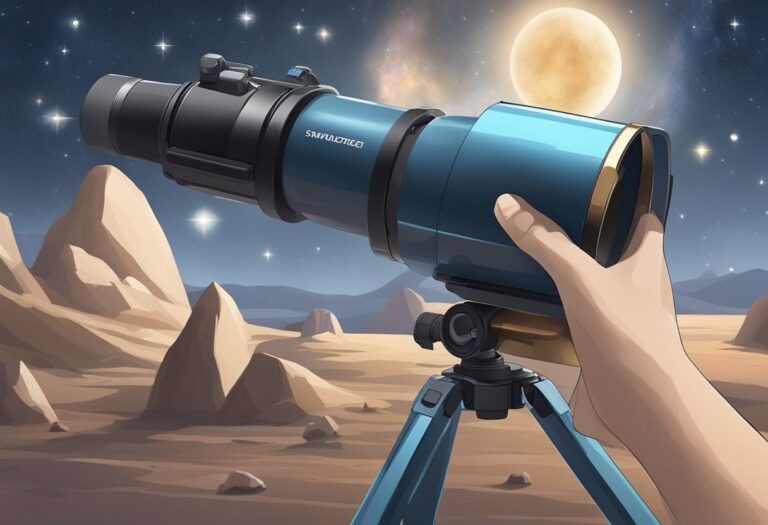Venturing into the serene world of stargazing requires not just passion and patience, but also the right gear.
Among the essential tools for astronomy enthusiasts is a specialized flashlight. Unlike standard flashlights, which can disrupt your adapted night vision with their bright, white light, astronomy flashlights are specifically designed to preserve your night vision and enhance your star-gazing experience.
Well, we’ll be going over:
- What features to look for in an astronomy flashlight and why they’re important for a stargazing experience.
- A selection of the best astronomy flashlights on the market, with a focus on their functionality, durability, and ease of use.
- How these flashlights cater to different stargazing needs, ensuring that your night vision is preserved while offering sufficient illumination for various tasks.
Whether you’re setting up a telescope, navigating in the dark, or reading astronomical charts, the right flashlight can significantly enhance your astronomical adventures.
Let’s dive in.
Choosing the Right Flashlight for Astronomy
- WAYLLSHINE Red Flashlight – Top Pick
- Celestron Astro Flashlight
- METII Red Flashlight
- RaySoar Red Light Flashlight
- Honoson Red LED Torch
In the quest for the perfect astronomical viewing experience, the right flashlight is vital. Illumination without impairing night vision is key, and I’ve focused on finding the best options. My selected flashlights offer red light modes to protect night vision, have long battery life for extended sessions, and are durable enough to withstand frequent outdoor use. Whether you’re charting constellations, setting up a telescope, or navigating to your observation spot, these flashlights will be a dependable partner in the dark.
WAYLLSHINE Red Flashlight
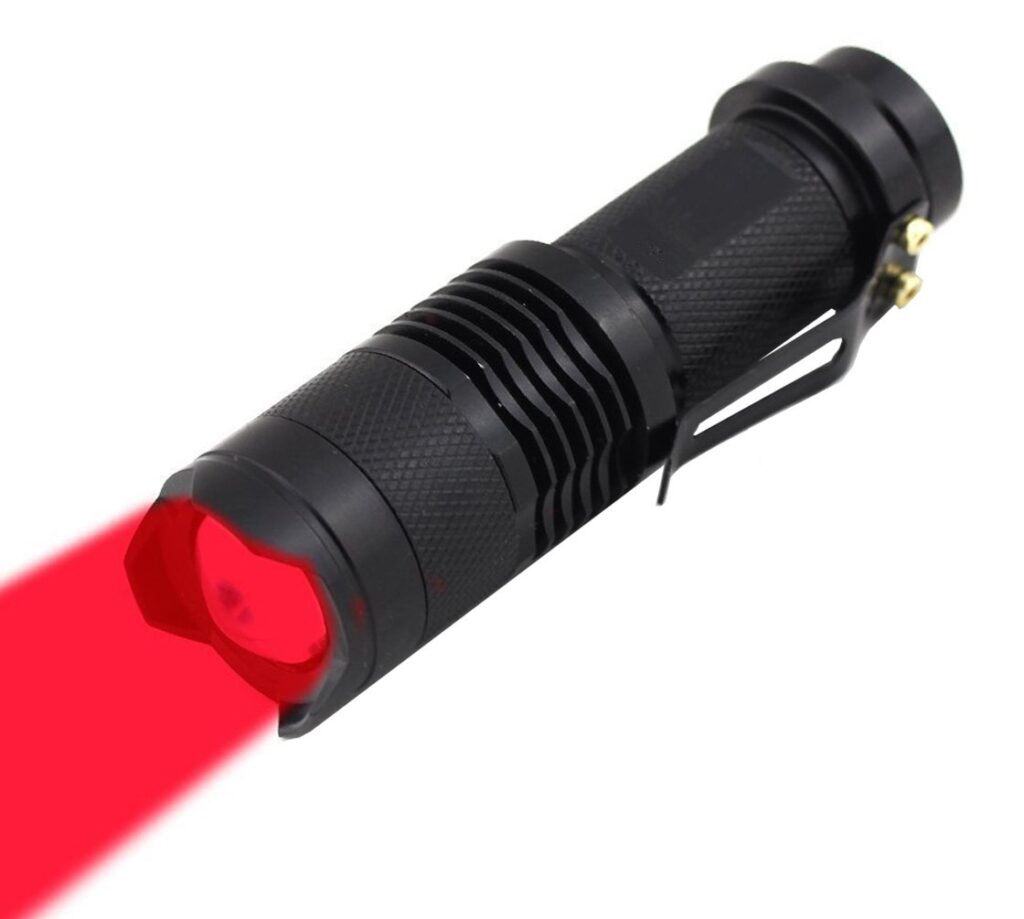
I found this flashlight to be a reliable accessory for night-time astronomy, keeping my night vision intact while allowing me to navigate the dark and read star maps.
Pros
Cons
The WAYLLSHINE Red Flashlight has become an indispensable part of my night-time wildlife observations and star-gazing sessions. Its single-mode red light is exactly what’s needed to minimize disruption to both animals and my own night vision.
Its ease of use is one of the key benefits, with a simple on/off switch mechanism. This means less fumbling in the dark and more time spent focusing on the night sky or stealthily spotting wildlife.
Despite its advantages, no flashlight is without its drawbacks. The fact that it is limited to just one light color can be seen as a limitation if you’re seeking versatility. Furthermore, while the AA battery requirement is convenient, the longevity of the light can vary based on the battery’s quality.
Overall, the WAYLLSHINE Red Flashlight shines when it comes to nighttime activities that require preserving natural visibility without startling the surrounding wildlife. It’s the kind of tool I’d recommend for anyone in need of a simple yet effective lighting solution for observing the natural world after dusk.
Celestron Astro Flashlight
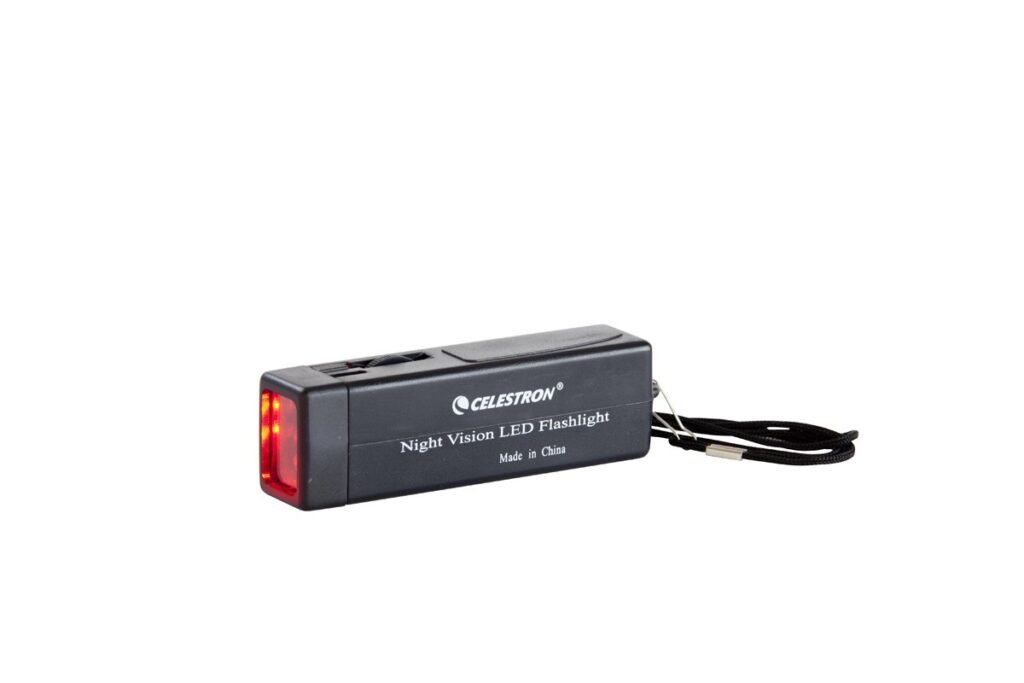
I’ve found that the Celestron Astro Flashlight is a must-have tool for any astronomer looking to preserve their night vision while observing the stars.
Pros
Cons
Having used this flashlight during multiple stargazing sessions, I appreciate how the red light conserves my night vision, allowing me to switch between looking at star charts and peering through my telescope with ease. The brightness control is a real highlight, providing just the right amount of light for any task without overpowering my eyes.
The thoughtful design deserves a mention. Unlike cylindrical flashlights that roll away at the slightest nudge, this square-shaped companion stays put on my observation table. Plus, the attached lanyard proves handy when I need to keep my hands free.
On the downside, the light’s intensity might not meet everyone’s needs. It’s sufficiently bright to help me navigate my equipment without spoiling my night vision, but if you’re looking for a more powerful beam, this might not be the one. Also, although the flashlight feels lightweight and easy to carry, some stargazers might question its durability, especially when used in rugged outdoor environments. Remember, while the included battery does the job, I sometimes wonder how frequently I’ll need to replace it for consistent performance.
METII Red Flashlight

After using this flashlight during several stargazing sessions, I believe it’s a prime choice for its versatile lighting and durable design.
Pros
Cons
I recently took the METII Red Flashlight with me on a night hike to test its practicality for astronomy. Its white light mode proved brilliantly illuminating for setting up my telescope in the dark. Switching to the red light mode, I found it preserved my night vision superbly, making it a breeze to read star maps without affecting my ability to adapt to low-light conditions. The memory feature meant I could turn it back on in red mode without cycling through the white light and ruining my night-adapted eyesight.
The zoom function caught my attention next. It allowed me to change the beam’s focus, widening to light up a large area or narrowing for a more intense spotlight. A half-press of the switch let me toggle between modes effortlessly, a small but significant feature when you’re handling various pieces of equipment in the pitch black.
What did raise a slight issue was the reliance on separately purchased batteries. Although it can take commonly available AAA batteries, not having a set included meant scrounging for them last minute. Additionally, not having a battery level indicator is a drawback. The light’s intensity didn’t wane, but it left me wondering about how much time I had before I needed a recharge or replacement.
Another note on design – while the flashlight felt sturdy and withstood a mild drizzle without issue, the pocket clip felt less robust. I was cautious when attaching it to my backpack, wary of applying too much force.
In short, the METII Red Flashlight excels in its primary role for night-time activities such as astronomy. Its lighting options and adjustability support subtle observation and detailed work. Despite the lack of batteries and a capacity indicator, as an astronomy enthusiast, I can’t deny the comfort and convenience it brought to my nocturnal hobby.
RaySoar Red Light Flashlight
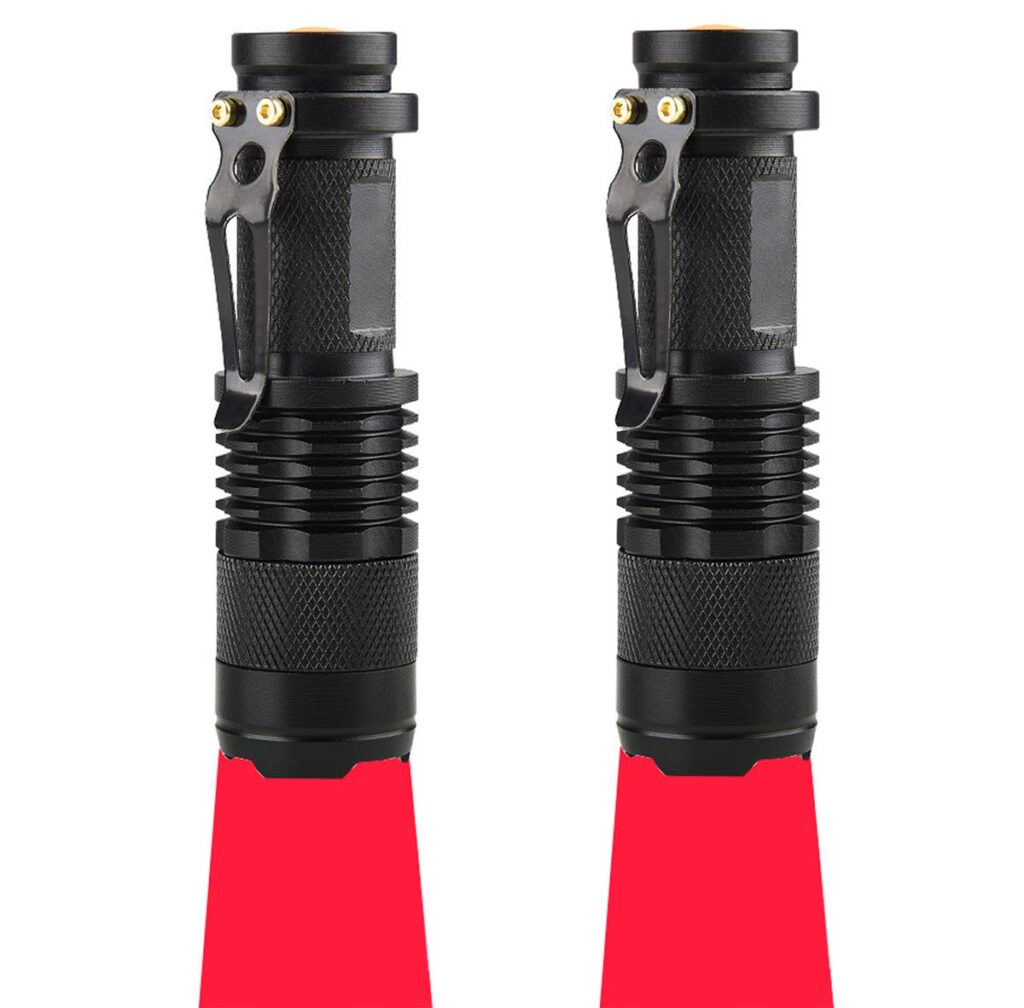
Having used the RaySoar Red Light Flashlight, I can attest to its valuable performance in preserving night vision for astronomy and seamless outdoor nighttime activities.
Pros
Cons
When I took the RaySoar Red Light Flashlight out for a test under the stars, its red light beam was specifically designed to be at a wavelength that doesn’t interfere with my adapted night vision. This was especially handy while stargazing, allowing me to consult my star charts without ruining my night sight. At 150 yards, the beam reach was impressive for such a compact tool.
The versatility of this flashlight was quite beneficial for my outdoor ventures. With three different modes to choose from, I used the high setting when I needed a powerful red beam and switched to low to conserve battery life during longer outings. The strobe mode could be a lifesaver in emergencies, signaling for help.
Traveling light was easy with the RaySoar. Its petite size and lightweight design hardly added any bulk to my pack, and the built-in clip kept it secure in my pocket. Despite this lightweight profile, it felt robust in my hand, thanks to its aluminum alloy construction. While I didn’t have any issues, some users have mentioned the tailpiece threads corrode quickly. It’s something to keep an eye on for longevity.
Honoson Red LED Torch
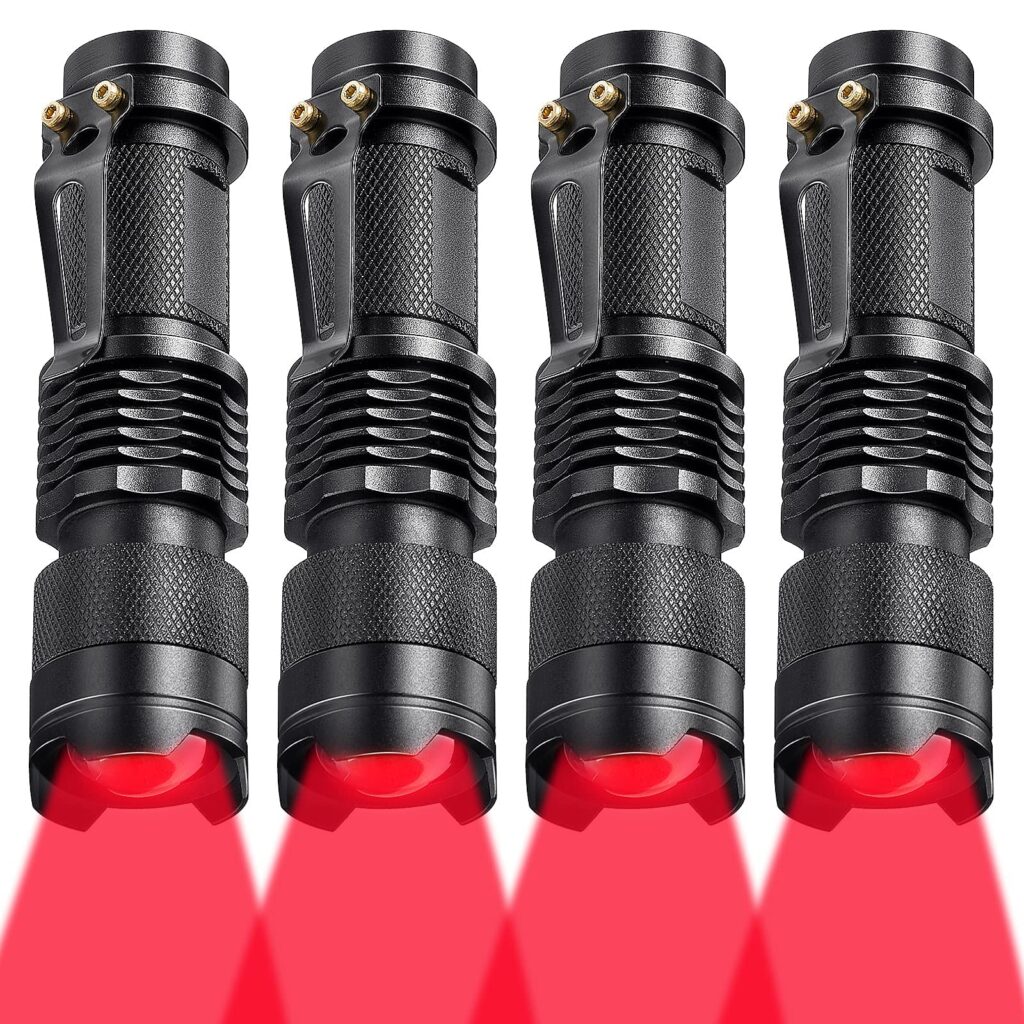
Having tested the Honoson Red LED Torch during my recent stargazing session, I found it to be an incredibly useful tool that didn’t disrupt my night vision.
Pros
Cons
When I unboxed the Honoson Red LED Torch, its sturdy aluminum body gave me confidence in its durability. The flashlight felt comfortable in my hand, and the steel body clip was a thoughtful addition, making it easy to attach to my gear.
The red light was strikingly effective. It illuminated my telescope’s controls without ruining my night vision, allowing me to make lens adjustments with ease. This feature alone made my astronomy sessions far more enjoyable.
The simplicity of having just one light mode meant no fumbling around in the dark for the right setting. While some multitaskers might miss additional modes, I appreciated the straightforward approach—it’s either on or off, no complications.
My one gripe might be the light’s intensity; it’s potent! For those needing a more subdued glow, this may be slightly overpowering. However, the adjustable focus somewhat mitigates this by allowing me to broaden the beam, reducing the brightness in the process.
If you’re after a practical and efficient light source for your nocturnal adventures, the Honoson Red LED Torch would be a sound addition to your kit.
Buying Guide
When I’m selecting a flashlight for astronomy, there are several key features I consider to help make observations easier and protect night vision.
Light Wavelength
I focus on flashlights with red LEDs, as red light minimizes the impact on night vision, allowing my eyes to remain adapted to the dark.
Brightness Settings
It’s important for me to have a flashlight with adjustable brightness. This way, I can set the light to the lowest setting needed to see without unnecessary glare.
Build Quality
I look for a sturdy build that is resistant to impacts and weather conditions. A good seal against moisture means I can use the flashlight in dewy conditions.
Portability
The flashlight should be lightweight and easy to carry. A compact design with a clip or lanyard hole is preferable for hands-free operation.
Battery Life
Long battery life is essential to avoid running out of light. I check for options that offer extended operation time or have replaceable batteries for longer viewing sessions.
Additional Features
- Dual-Light Modes: Some flashlights offer a secondary white light which can be useful for packing up or in case of emergencies.
- Focusing Beam: Being able to focus the beam helps me pinpoint objects or widen the light’s scope as needed.
- Ease of Use: Simple operation is key. I prefer flashlights that can be easily turned on/off or adjusted with one hand.
By considering these factors carefully, I ensure that I choose a flashlight that enhances my stargazing experience.
Frequently Asked Questions
In this section, I gather key information that amateurs and seasoned astronomers frequently inquire about to enhance their night sky observation with the right type of flashlights.
What features should I look for in a flashlight suitable for astronomy?
I recommend looking for flashlights with adjustable red-light settings, a comfortable grip, long battery life, and durable construction. The ability to switch between brightness levels is also crucial for preserving night vision.
How does a red light flashlight benefit stargazing experiences?
A red light flashlight helps maintain night vision, which is essential for stargazing. My eyes are less sensitive to red light, so using one minimizes the impact on my ability to see the faint light from stars and deep-sky objects.
What are the top recommended flashlights for night sky observation?
The top recommended flashlights for night sky observation include models like the Celestron Night Vision Flashlight, Orion RedBeam Mini LED, and the Astro R-Lite Red LED Flashlight. These are specifically designed to provide the red light necessary for astronomy.
Why is it important to use a red flashlight when observing the night sky?
Using a red flashlight is important because it keeps my pupils dilated, ensuring that I can observe faint stars and nebulae without waiting for my eyes to readjust to the darkness after being exposed to white or blue light, which can take up to 30 minutes.
How does the brightness level of a flashlight affect night vision in astronomy?
The brightness level of a flashlight directly affects night vision. If the flashlight is too bright, even if it’s red, it can cause my pupils to constrict, diminishing my ability to see in low light. A dim, red light is optimal to preserve my night vision while illuminating my surroundings.
Can the flashlights designed for military use be suitable for astronomy, and if so, in what capacities?
Yes, flashlights designed for military use can be suitable for astronomy, especially if they offer red light modes and variable intensity. Their rugged design is beneficial for outdoor use, and their ability to provide low-level illumination matches the requirements for preserving night vision while observing the night sky.






